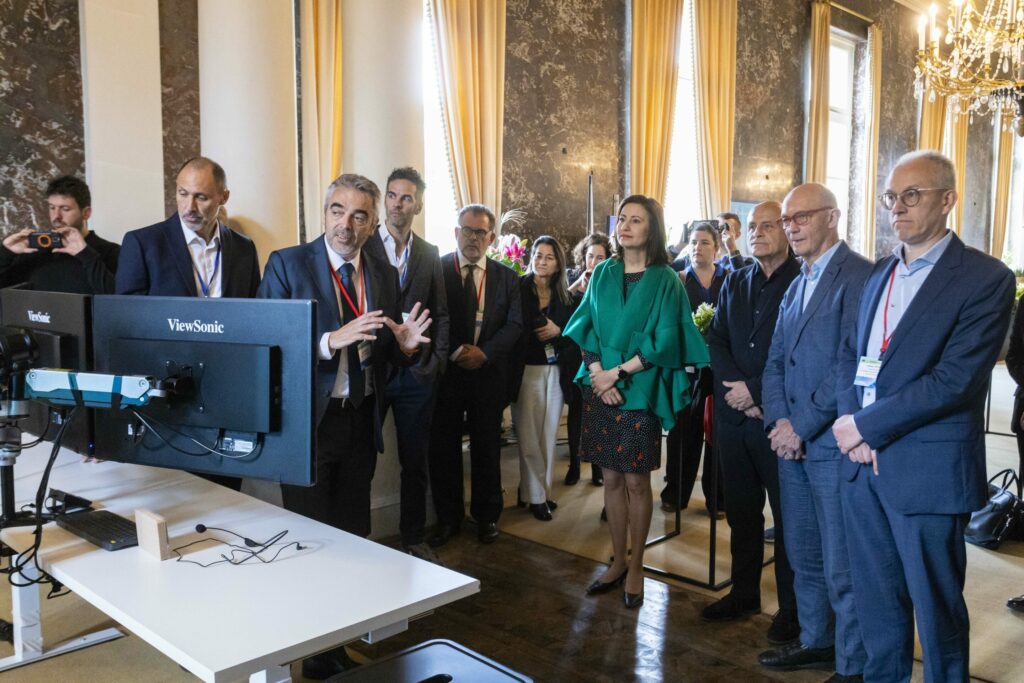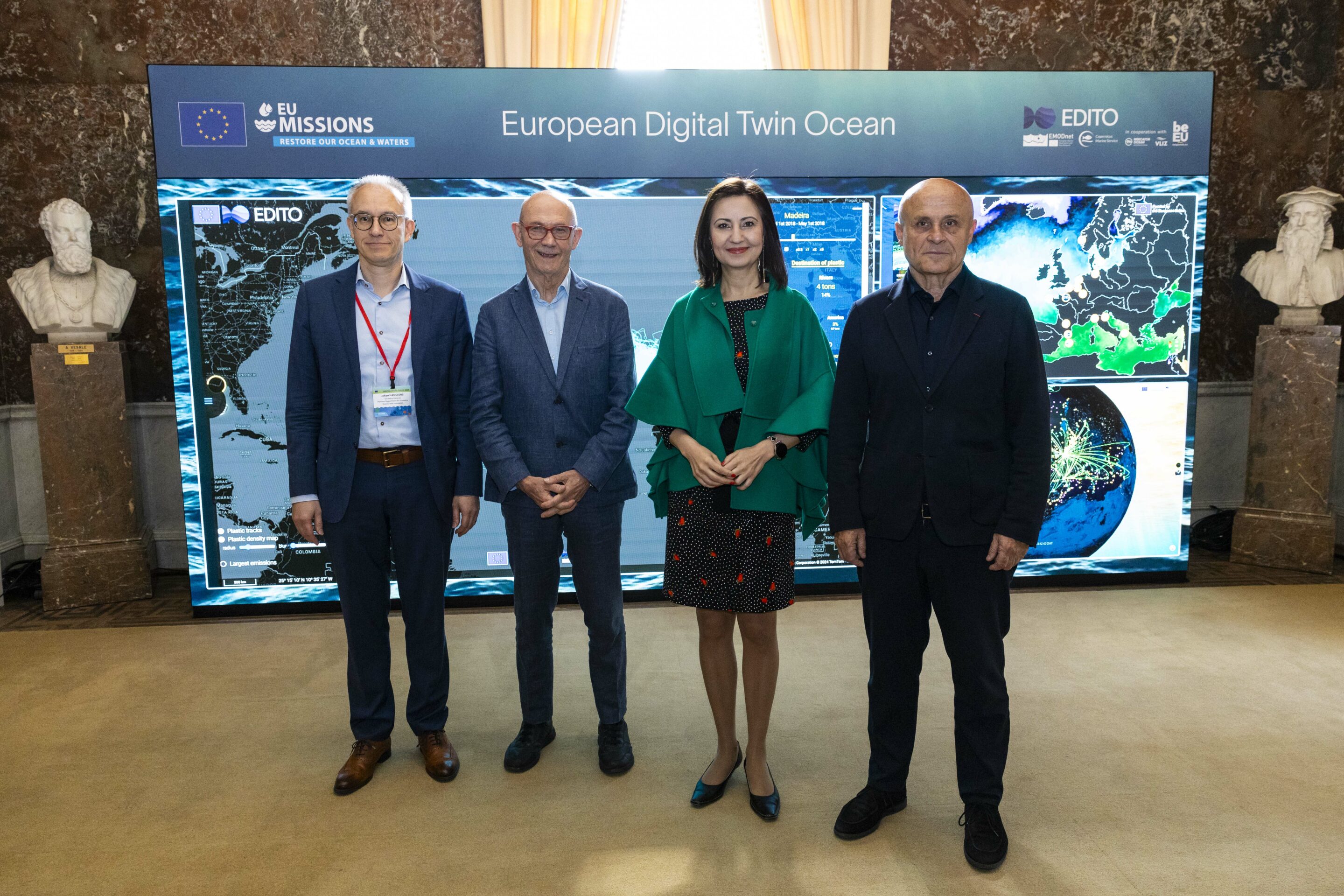The ocean, covering more than 70% of the Earth's surface, is crucial for life. It regulates the climate, supports biodiversity, and provides food and livelihoods for millions. However, it faces serious threats from pollution, overfishing, and climate change. To address these challenges, the European Union has launched the European Digital Twin Ocean (EU DTO), aimed at revolutionising the way we understand and manage marine environments.
“Our ocean will be determinant in many of the things that happen, in the choices that we have ahead on where we live and how our economy moves, our ecosystems, our energy and how we deal with some of the risks that come from the climate change that we will have to adapt to in the future. So our understanding of the ocean is central to our understanding of our own prospects as a society and as an economy,” explained John Bell, Director of Healthy Planet for Directorate-General Research, Science, and Innovation (DG RTD).
The EU DTO is a vital part of the EU Mission "Restore our Ocean and Waters" and developed through the sister Horizon Europe EDITO-Infra and EDITO-Model Lab projects. The platform features a data lake, processing engine, and virtual simulation environment for advanced marine research and policymaking. Utilizing advanced numerical modelling, machine learning, high-performance computing, and predictive tools, it aids in effective marine management and sustainability.
The EU DTO is built on solid technical foundations, integrating flagship European marine data from the European Marine Observation and Data Network (EMODnet) and the Copernicus Marine Service, which together offer comprehensive marine data. EMODnet provides access to standardised, high-quality marine data from nearly 25,000 time-mapped sources, including research institutions, government agencies, and private organisations. The Copernicus Marine Service, part of the EU’s Earth observation programme, offers past, near-real-time data and forecasts on the state of the ocean across the Blue (physical), White (sea ice) and Green (biogeochemical and biological) ocean.
“The idea here is to bring the fragmented pieces into one place, into a new shape and form so that it can be accessible, available, and readily usable for everybody,” explained Kestutis Sadauskas, Deputy Director-General for Maritime Affairs and Fisheries (DG MARE).
Kate Larkin, head of the EMODnet Secretariat, pointed out, “The Digital Ocean Forum 2024 on 13 June 2024 was a significant milestone for EC marine data services EMODnet and the Copernicus Marine Service as it showcased the first common marine data backbone infrastructure for the EU Digital Twin Ocean. Such infrastructure is crucial since ocean observations and integrated marine data form the baseline truth upon which the EU DTO's what-if scenarios and decision-making tools will be built to support EU policy, the Blue Economy, and beyond.”
The EU DTO’s advanced numerical modelling enables the simulation of complex oceanic processes. The Digital Twin engine will provide a coherent and multi-dimensional description of the marine environment and biodiversity, from the coast to open ocean. The platform will allow a digital exploration in time and space of the ocean according to different scenarios. It utilises innovative artificial intelligence techniques, combining advanced machine learning methods and ocean ecosystem models based on physics-guided machine learning and causal reasoning.
Predicting and protecting: ocean changes
Iliana Ivanova, European Commissioner for RTD, highlighted the significance of this initiative: “Thanks to the investment from the EU research and innovation programme Horizon Europe, it will help us understand how pollution and human activities affect the ocean and its critical role in regulating the climate and preserving biodiversity,” she told participants at the Digital Ocean Forum.
“It is still a prototype, but once it’s fully up and running, the platform will become a game-changer in ocean management, providing essential information and precise real-time predictions.”
Having received a private demonstration of the capabilities of the new platform at the Forum event, Commissioner Ivanova was quick to praise the technical capabilities of the resources. The platform developers have paid special attention to ensuring the accessibility of the platform, allowing professionals or amateurs from across civil society to leverage massive amounts of data.
"The digital twin of the ocean is not a static snapshot. It is designed to learn, evolve, simulate, and predict future ocean conditions based on historical data. It will empower users to access real-time data, run simulations, and explore potential outcomes. This will inform robust science-driven decisions,” she explained.
The primary goal of the EU DTO is to understand and predict ocean changes to protect and preserve marine resources. By creating a digital replica of marine environments, the EU DTO enables governments, researchers, businesses, activists, and citizens to make informed decisions for ocean restoration, sustainable economy support, and climate change mitigation. This public core infrastructure can host and integrate ocean applications and services from all ocean communities.

Mercator Ocean International experts Alain Arnaud (Head of Digital Ocean) and Fabrice Messal (UX and Capacity Development Manager) giving a live demonstration of the EU DTO platform to high-level stakeholders, including Commissioner Ivanova, John Bell, Ambassador Olivier Poivre d’Arvor, Pascal Lamy and Johan Hanssens. Credit: Bernal Revert/BR&U.
Pierre Bahurel, Director-General of Mercator Ocean International, emphasised the collaborative nature of the EU DTO’s development: "The EU DTO represents the culmination of decades of expertise in operational oceanography. By uniting partners and initiatives at both EU and international levels, we ensure an inclusive, collaborative approach in building this revolutionary digital framework."
Bahurel added, “We now have this operational database that is the hidden part. We can invite anyone to contribute and build the value of the European Digital Twin Ocean. The EU DTO is a mosaic of contributions, a living, impactful tool made of the knowledge, skills, and data from various stakeholders.”
Many sectors set to benefit from the EU DTO. The capabilities of this platform will only expand. It aims to grow its data sources as the platform develops, leading to even greater insights. The new resource is scalable and was built with the principle of interoperability in mind.
Apps for coastal resilience, pollution and the blue economy
By providing accurate, real-time data and advanced predictive capabilities, and infrastructure various industries could operate fit-for-purpose apps. The EU DTO can support the development for the blue economy, for renewable energy projects, for example. By providing detailed oceanographic data and predictive models, the platform may identify optimal locations for offshore wind farms and tidal energy installations. This information is crucial for energy companies to minimise environmental impact while maximising energy output. By integrating environmental data with renewable energy planning, the EU DTO can facilitate the growth of sustainable energy solutions, contributing to the EU's goals for reducing carbon emissions and transitioning to green energy.
Urban planners can use it to design resilient coastal cities that can withstand rising sea levels and extreme weather events. Environmental agencies can equally monitor and protect marine biodiversity, ensuring that conservation efforts are targeted and effective. A key application of the EU DTO is the development of nature-based solutions against coastal hazards. Nearly 40% of the world’s population lives within 100 kilometres of the coast, facing vulnerabilities like erosion, flooding, and biodiversity loss. Traditional strategies focus on physical barriers, but the EU DTO highlights the potential of nature-based solutions, such as planting seagrass meadows.
These vegetative barriers not only reduce erosion and wave heights but also act as carbon sinks, aiding climate mitigation efforts. This platform is able to identify optimal conditions for implementing these sustainable strategies, demonstrating the practical benefits of integrating natural processes into coastal management.
Nature Based Solutions with Kelli Johnson, Scientific Project Manager at Helmholtz-Zentrum Hereon, Germany.
Plastic pollution is a significant problem, with an estimated 10 million tons of litter ending up in the world's oceans each year. The EU DTO's capabilities in tracking and predicting plastic pollution can help address this pressing issue by providing actionable data for cleanup efforts and pollution prevention strategies. The inclusion of EDITO Models lab’s Marine Litter tracking app within the EU DTO will help follow and predict plastic pollution and can help address this by providing actionable data for clean-up efforts and pollution prevention strategies.
This tool predicts the accumulation of plastic debris from various sources, such as rivers and maritime activities, and tracks its movement and impact on coastal areas and Marine Protected Areas. By using advanced modelling and real-time data, the plastic tracker can run simulations to assess different intervention strategies.
Long term benefits
As a public core infrastructure, the EU DTO is designed to evolve and adapt to the needs of all ocean communities. Its open architecture allows for the integration of both open-source and proprietary applications, fostering innovation and collaboration across sectors.
Moreover, the EU DTO supports the EU’s goal towards global environmental governance. The platform enhances the EU’s capacity to live up to its obligations under international agreements like the Paris Agreement and the Marine Strategy Framework Directive, and provide insights beyond the borders of the EU. This data-driven approach ensures that environmental policies are driven by the latest scientific evidence, fostering more effective and sustainable management practices. With the help of "what-if" scenarios, policymakers can test, assess, and choose the most effective strategies for actions.
Pierre Bahurel, Director-General of Mercator Ocean International, explains, what is the EU DTO and how it can support policy makers.
Mercator Ocean International and the Flanders Marine Institute are the key players behind the development of the EU DTO infrastructure. Mercator Ocean, which also leads the project to develop next generation models, should transition into an intergovernmental organisation (IGO) in 2025, helping to design, develop, and operate the world-class Digital Ocean Systems, on which the EU DTO is reliant.
Currently open to beta testers, the EU DTO should play a pivotal role in the future of ocean management. Its development is a testament to the EU’s commitment to innovation, sustainability, and international collaboration.
The transformative capabilities of the EU DTO are poised to significantly enhance our approach to ocean management. By leveraging large data pools and advanced technology, the EU DTO provides a comprehensive and dynamic understanding of our threatened marine environments. This enables all ocean stakeholders to make well-informed, science-based decisions that drive sustainable development and resilience against climate change.
European Digital Twin Ocean: A game changer for policymakers, coastal communities & society. Credit: EDITO.
For more information, visit Digital Ocean Forum 2024 and EDITO.
The Brussels Times

